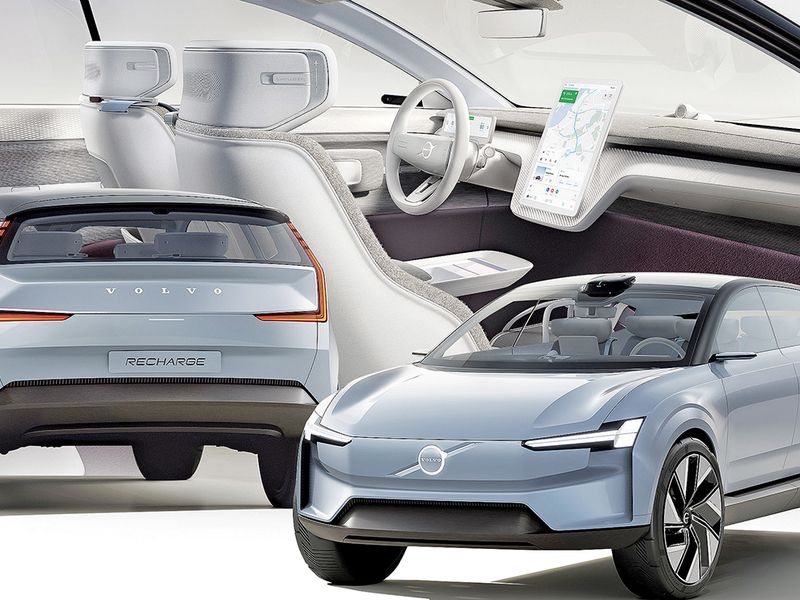
Volvo Cars is not just changing its product lineup — it’s also rethinking how its vehicles are designed and who will make their components.
In short, Volvo intends to take over the development and production of some of its key components to get closer to emerging technologies.
Roiling the company’s evolution is the dawning of the electric vehicle age.
In an online presentation to journalists last week, the Swedish automaker pulled back the curtain on its R&D activity, showing that its second wave of EVs will look different, be constructed on a new vehicle architecture and rely increasingly on components Volvo will take the lead in developing.
Volvo aims to be an electric-only brand by 2030. And to increase the speed of that undertaking and reduce complexity, Volvo is adopting a more hands-on role in developing the components it will need, such as batteries, electric motors and computer systems, the company said.
Volvo Cars CEO Hakan Samuelsson, who participated in last week’s presentation, said the automaker cannot depend solely on its suppliers for the technology.
“We need to go deeper,” the CEO said. “We need to understand batteries in the same way we understand the combustion engine. We need to understand charging and [battery] chemistry.”
The company revealed what it called its “Concept Recharge” — a prototype for a new portfolio of EVs that it plans to introduce in coming years.
One in particular, Volvo said, will be a new battery-powered crossover it says will become its new flagship. The large crossover — which will not carry over the XC90 name of Volvo’s current top-of-the-line utility vehicle — will be built at the automaker’s factory near Charleston, S.C., and be distributed globally, the company said. Officials declined to say what the flagship will be called but said its name will deviate from the brand’s use of letters and numbers.
“We would be totally underselling the new vehicle by calling it the upgraded XC90,” Samuelsson told Automotive News following the presentation. “It’s really a new first of its kind.”
Volvo plans to reveal a production version of the model in 2022. AutoForecast Solutions anticipates that output could begin in early 2023.
The new EV platform will underpin future crossovers, sedans and station wagons, and Volvo will count on it to propel the company toward its stated goal of selling 600,000 EVs — half of its anticipated global volume — by 2025.
“We see the demand is there. So, it’s up to us to deliver the cars,” Volvo Chief Technology Officer Henrik Green said.
The plan will usher in a new Volvo design language. The automaker’s next-generation EVs will be based on a skateboard approach to vehicle layout. By using a full battery pack that sits under the flat floor, designers will extend the wheelbase and create more interior space.
The design will allow a crossover’s hood and roofline to be lowered to make models more aerodynamic without compromising visibility for occupants, Volvo said. The traditional grille has been replaced with a shield-like structure, supported by a new interpretation of Volvo’s Thor’s Hammer headlight design.
The minimalist interior is anchored by a 15-inch touch screen and a floating screen behind the steering wheel that will use Volvo’s newly developed operating system.
The new EVs also will adopt a centralized and less-complex computing platform, the company said. Rather than relying on multiple electronic control units to oversee individual features and systems, an increasing amount of in-house-developed software will run in a powerful computing system.
“The days where we just made a hardware car and sold it are gone,” Samuelsson said. “Now, a lot of functionality comes from software.”
But outsourcing software development is no longer an option, he added.
“It’s too slow and inefficient to just specify what we want and get it in a black box from a supplier,” Samuelsson said. “That is not giving us the functionality we need to be different.”
In one significant step toward more vertical integration, Volvo has partnered with Swedish battery maker Northvolt to develop a new generation of batteries that could deliver more than 600 miles of range while slashing charge times, Volvo said.
But Volvo said it also will need to secure a “dramatic increase” in battery cell capacity to support its EV road map. The automaker expects to grow from 4 gigawatt-hours of production capacity last year to more than 70 gigawatt-hours by the middle of this decade.
Starting in 2024, Volvo plans to source 15-gigawatt hours of annual battery cell capacity from Northvolt. By 2026, the partners plan to build their own battery cell factory with up to 50 gigawatt-hours of capacity to support EV production in Europe. Volvo wouldn’t say where that plant will be located, but Sweden and Finland were named as site candidates.
Company executives also remained tight-lipped about where Volvo plans to source the batteries that will be needed for its EV production plans at its assembly plant near Charleston.
“We’re still finishing the choice of suppliers for batteries for Charleston,” Javier Varela, Volvo Cars head of industrial operations, said last month.
Samuelsson said Volvo remains on track for an initial public offering on the Stockholm stock exchange this year.
He acknowledged that the technology presentation was partly aimed at potential investors. But he said showcasing Volvo’s R&D plans should also help the automaker attract talent with expertise in software and battery technologies.
“It’s very important for us to demonstrate and show ourselves as a company that is really utilizing technology and electrifying faster than anybody else,” Samuelsson said. “We should say that these are our ideas for the future and this is how we will make our cars and company more valuable.”